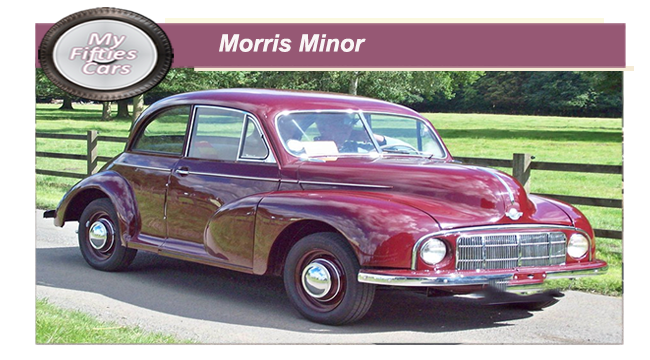
Although not actually announced until Britain staged its first postwar Motor Show at Earls Court in October 1948, development of the Morris Minor Series MM that had got under way during the darkest days of World War Two.
 The Mosquito/Minor was almost wholly the brainchild of Alec Issigonis, a gifted engineer who had worked with Morris since before the war.
The Mosquito/Minor was almost wholly the brainchild of Alec Issigonis, a gifted engineer who had worked with Morris since before the war.
Issigoniswent on to gain international recognition as become as the design guru behind the Mini for BMC.
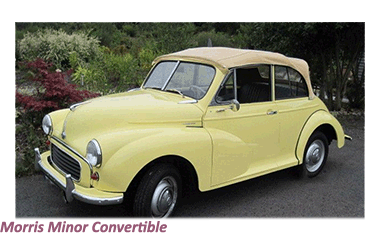 Nuffield's new Minor would have been an all-new post-war product if the company had allowed a brand-new engine to be chosen.
Nuffield's new Minor would have been an all-new post-war product if the company had allowed a brand-new engine to be chosen.
 In the end, this very modern machine was lumbered with the ancient and under-powered side valve four of the Morris 8 Series E, which had its roots in the early 1930s.
In the end, this very modern machine was lumbered with the ancient and under-powered side valve four of the Morris 8 Series E, which had its roots in the early 1930s.
Issigonis was reportedly very much against fitting this dated engine in the Minor.
The engine had already been considerably updated, by the adoption of a counterbalanced crankshaft and replaceable shell bearings, for the Morris 8 Series E of 1939, although it was still without a water pump and oil filter in its latest application.
![]()
In the prevailing atmosphere of austerity of the immediate post-war years, the Morris Minor certainly continued the theme, with the original models available being only two-door saloons and convertibles, with the four-door saloon not released until 1950.
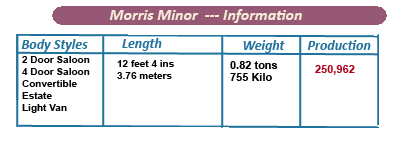 At a late stage in the Minor’s development, the body was widened and featured small, low-mounted headlamps on each side of the grille.
At a late stage in the Minor’s development, the body was widened and featured small, low-mounted headlamps on each side of the grille.
As the 1948 London Motor Show approached, excitement among members of the UK motoring public was high, as it was the first major auto show of the post-war era.
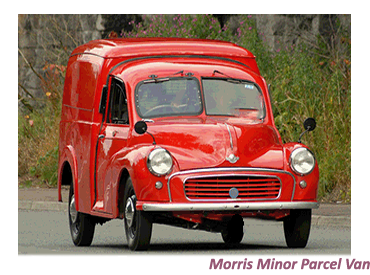 The Minor was just one of three new Morris models unveiled at Earls Court, but the compact car not only stole the thunder of its bigger sisters, the Oxford and Six sisters.
The Morris Minor was generally regarded as being the star of the show- a first generation “ people’s car”.
Because of its refreshing new appearance, emphasised by its distinctive split windscreen and the fact that it handled as no other British compact car had ever done, the public were less critical of the Minor’s performance which left a lot to be desired.
The Minor was just one of three new Morris models unveiled at Earls Court, but the compact car not only stole the thunder of its bigger sisters, the Oxford and Six sisters.
The Morris Minor was generally regarded as being the star of the show- a first generation “ people’s car”.
Because of its refreshing new appearance, emphasised by its distinctive split windscreen and the fact that it handled as no other British compact car had ever done, the public were less critical of the Minor’s performance which left a lot to be desired.
 Officially rated as having a top speed of 62mph (100 k/ph), it was a rare occasion indeed to see one of the early versions of the Minor hit a speed anywhere approaching 45mph (72 k/ph).
Officially rated as having a top speed of 62mph (100 k/ph), it was a rare occasion indeed to see one of the early versions of the Minor hit a speed anywhere approaching 45mph (72 k/ph).
![]()
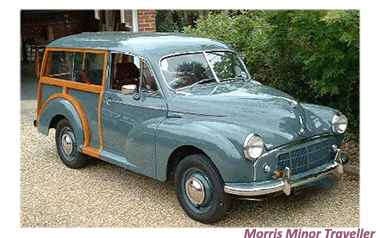 The merger of Austin and Morris to form the British Motor Corporation in 1952 resulted in the replacement of the weak side-valve engine with Austin's more efficient 803cc (49 cu in) overhead valve A-series unit, much to the understandable annoyance of Morris engineers, who didn't want their car powered by a 'rival' engine.
The merger of Austin and Morris to form the British Motor Corporation in 1952 resulted in the replacement of the weak side-valve engine with Austin's more efficient 803cc (49 cu in) overhead valve A-series unit, much to the understandable annoyance of Morris engineers, who didn't want their car powered by a 'rival' engine.
 In 1953, the range of bodies was increased, with the wood-sided Traveller estate, van and pick-up joining the existing saloon and convertible.
In 1953, the range of bodies was increased, with the wood-sided Traveller estate, van and pick-up joining the existing saloon and convertible.
The Morris Minor in its various formats and upgrades would go on to sell 1.2 million vehicles (making it the first British car to reach the magic million mark) over its 23-year production life.


